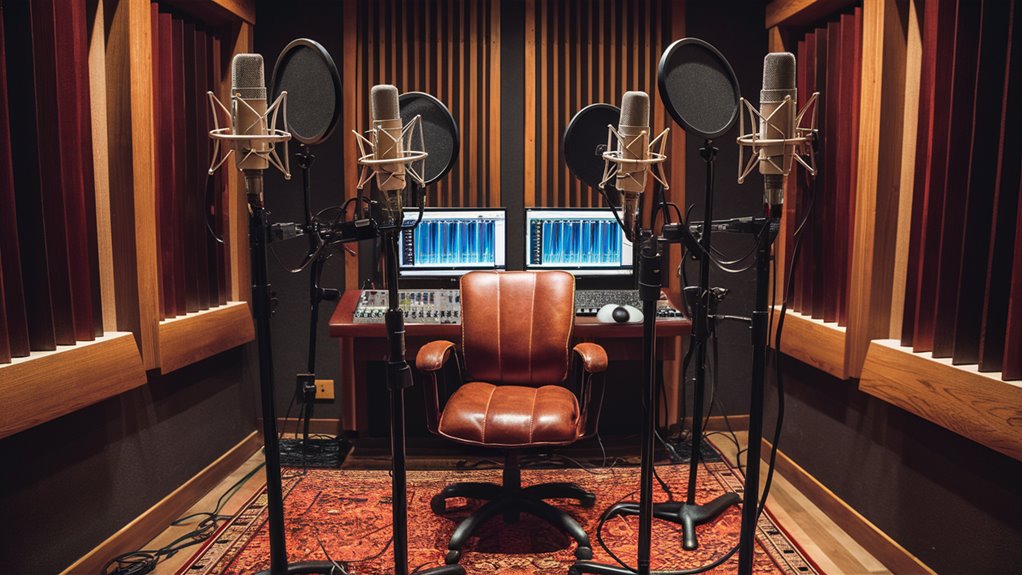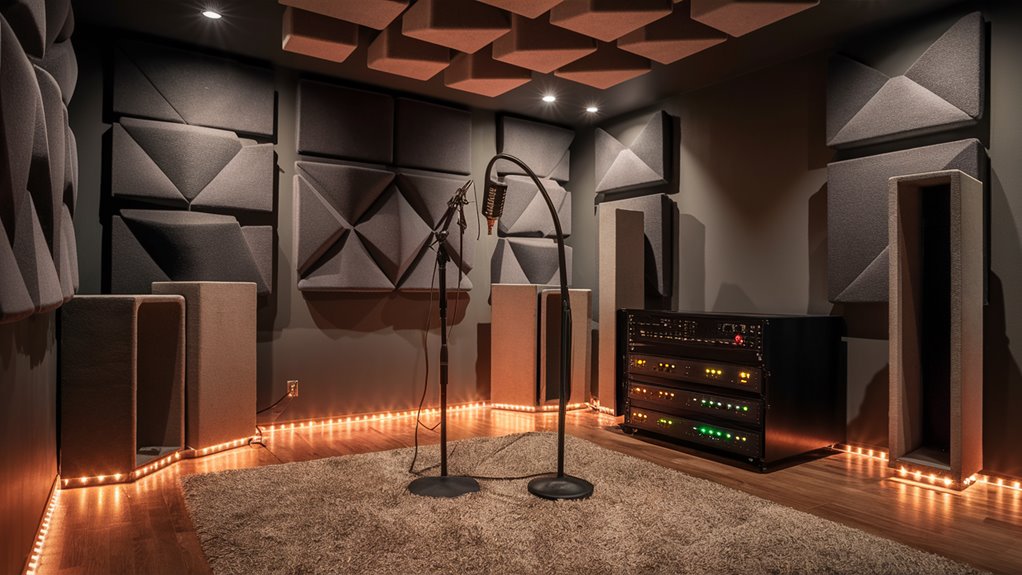How to Make a Karaoke Studio for Recording

Need-to-Know Room Setup and Sound Control
To start a good karaoke recording spot, focus on how the room sounds. Pick a place that is at least 100 square feet and put in sound gear such as:
- Sound panels on walls
- Bass traps in corners
- mixes top-notch
- Diffusers to spread the sound out well
The Right Audio Tools
Main Recording Bits
- 24-bit/96kHz audio part for clear sound change
- Good mics (both for loud and soft sounds)
- Small studio speakers set at 45-degree angles
Setting Things Up
- Adjust the audio software to 48kHz/24-bit
- Make sure there is no delay in sound
- Put in a system for many headphones
Better Studio Setup
Handling the Sound Path
- Make channels for sound to move
- Build mix plans for different shows
- Keep the sound levels right
Keep Things Running Smooth
- Check your tools often
- Test the sound path
- Look over the sound gear
- Make sure speakers are lined up right
Keeping the Room Right
- Keep the room cool for stable tools
- Control wetness for the mics
- Systems for fresh air for singers
- Lights that change how bright they are
Room Sound and Sound Gear
Room sound and sound gear are key for a top-notch karaoke studio.
Making a sound-balanced place needs careful putting of important sound gear to cut unwanted bounce and sound circles.
Where to Put Sound Gear
Sound panels should face each other to stop echoes, while bass traps go in corners to take care of deep sounds.
Put diffusers on the back wall to keep a natural feel while spreading out the sound right for top voice recording.
Full Room Coverage

Sound clouds up on the ceiling handle sound coming back from above that can mess up recordings.
Floor gear that softens sound like thick carpet or special rubber cuts down sound from below.
Making a room that floats by not connecting it fully cuts down outside noise.
Sure Check on Sound Gear
Checking sound response with top gear mics and sound check software makes sure gear is put right.
This careful plan gets a smooth sound curve over important voice levels, giving true studio sound.
All parts work together to make a sound-treated space that fits today’s karaoke singing and recording needs.
Key Recording Gear Picks
Top audio parts start any serious recording setup. Best picks should back 24-bit/96kHz recording, with top names like Focusrite Scarlett and 베트남밤문화 Universal Audio Apollo.
For full voice catch, use both loud sound mics for live shows and soft sound mics for clean studio sound.
How to Hear It Right
Studio hearing tools need a two-way plan. Put in small studio speakers like the Yamaha HS series for true sound, and closed earphones like Sony MDR-7506 for personal listening.
A big mix board with at least 8 channels handles many sound ins and complex effect paths.
Keeping Sound Pure
Sound purity leans a lot on the right wires. Use balanced XLR wires for mic hook-up and TRS wires for other sound links to cut noise.
The recording system needs a fast computer with at least 16GB RAM and quick storage.
Better voice work needs dedicated sound squash and balance tools for real-time work, giving constant top-quality recordings.
Software and Digital Tools
Audio software is key for pro karaoke systems. Pro Tools and Logic Pro X are top picks for high-quality sound work.
Set your sound part drivers at 48kHz/24-bit for clear sound.
